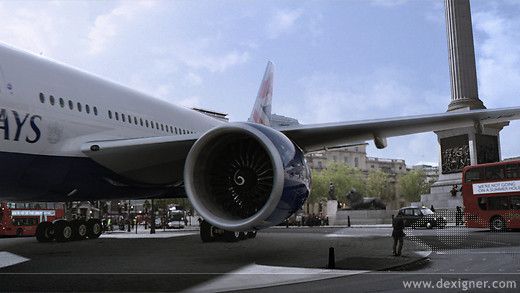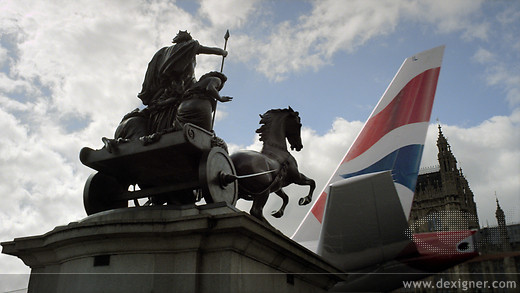Framestore has worked with BBH to deliver an integrated Olympics campaign for British Airways,comprising an iconic TV ad,a timely viral teaser and a customisable application that creates personalised edits of the TV spot.Centering on a Boeing 777-200 being piloted through the streets of London,the campaign follows the plane on a road trip from Heathrow for the Olympic stadium,taking in the best of London's sites on its way.
An unbranded teaser,paying homage to the recent'Fenton the Dog'YouTube sensation,marked the start of the campaign.Directed,produced and post-produced entirely by Framestore,the viral sees a terrier called Cookie playing in Richmond Park.But the canine is swiftly distracted by the irresistible urge to chase a BA plane,which was composited into the park footage by Framestore's digital team.The dog's helpless owner is left stranded,crying"Cookie"with increasing panic.

The campaign launched in full with an app that creates a personalised version of the TV ad.By asking viewers to enter their postcode or address,this personalised version includes three extra shots in which the BA plane drives through the viewer's street.Framestore's digital team created this real-time customisation by making dynamic calls to Google's Street View API.
The TV production,directed by Partizan's Michael Geoghegan,initially only required up to eight CG plane shots.But the final edit necessitated many more CG shots,thanks to the gloomy British weather.The production team had access to a Boeing 777-200 at BA's engineering depot,but sunlight over these shoot days was so poor that much of the footage needed to be replaced by CG.
Following an equally gloomy location shoot,most shots were re-lit,and their skies replaced,to create the sense of dawn turning into early morning as the plane departs Heathrow for the two-hour drive across London to the Olympic Stadium.Although applying lighting to hard-surface CG objects is usually a straight-forward process,on this occasion,because of the dull weather,the team had to make educated guesses about lighting information.The challenge was intensified by the fact that these extra shots required detail that had not initially been accounted for,such as intricate landing gear–minutiae that requires a lot of time to recreate in CG.

Framestore's task began by developing a pre-vis with the director based on location recce photos and scale data from Google Maps.This was followed by a three-day shoot at Hatton Cross with a Boeing 777-200 supplied so that the crew could shoot plane exteriors and interiors.Framestore's pre-vis allowed the director to accurately line-up the Hatton Cross plane and translate corresponding lens,title and height data into the location plates,which were filmed a few days later.This approach ensured seamless compositing of the location and aircraft plates.The location shoot was followed by further shoots of Heathrow and the Olympic site so that Framestore's two VFX supervisors–Russell Dodgson and Rob Kolbiens capture HDRI images to help place location reflections and lighting onto the CG aeroplanes.
The VFX team had access to Boeing CAD data to help the CG build.Along with official livery artwork,the VFX supervisors took countless texture reference images of the plane for hi-res texturing in Mari.This was then shared with Boeing and BA at each stage of the process to make sure all tiny details were correct,so ensuring the plane's tight shots would stand-up to close inspection.Almost every shot required some level of delicate adjustment to make sure the plane fitted into its environment.
Location footage was full of people and vehicles,which had to be stripped out to reflect the correct traffic conditions,plus health and safety.Road surfaces were recreated or extended and Union Jack flags and festive bunting were added to many shots.The Olympic Stadium was cleared of all its work-in-progress and building paraphernalia so that the final scenes could be dressed with the likes of giant CG ribbons that stretch from floor to roof around the entire stadium.The stadium–which Framestore had already recreated in CG,way back in 2011,in preparation for the inevitable influx of Olympics productions–was further enhanced with Olympic branding and a full CG crowd.
Compositing was achieved by combining Nuke and Flame,with the Flame team mainly prepping backgrounds and dressing shots,whilst the Nuke team took on the majority of 3D compositing.Framestore's colourist,Simon Bourne,worked closely with the team throughout the process to ensure a smooth grading work flow for a job where the majority of shots were rebuilt from a variety of sources.





